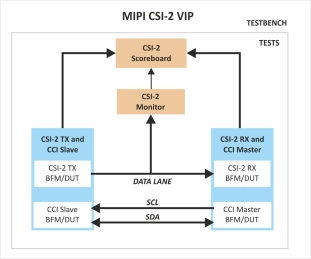MIPI CSI-2 IP
As part of the MIPI (Mobile Industry Processor Interface) standard, MIPI CSI-2 IP supports high-definition image and video streaming, making it an ideal solution for modern cameras, sensors, and imaging systems. With its ability to provide low-power, high-performance connectivity, MIPI CSI-2 IP ensures seamless integration in smartphones, automotive applications, drones, and security systems.
-
MIPI CSI-2 RX Controller
- Lane merging, virtual channel detection, and programmable data extraction
- Error detection and correction, including packet-level and protocol decoding errors
- Supports all pixel formats defined in the CSI-2 standard
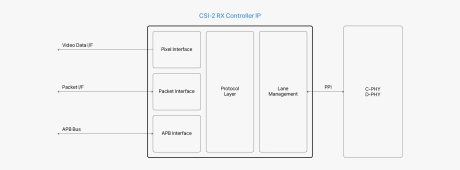
-
Simulation VIP for MIPI CSI-2
- Support testbench language interfaces for SystemVerilog, UVM, OVM, e, and SystemC
- Generates constrained-random bus traffic with predefined error injection at CSI-2, D-PHY, C-PHY and A-PHY levels
- Callbacks access at multiple TX and RX queue points for scoreboarding and data manipulation
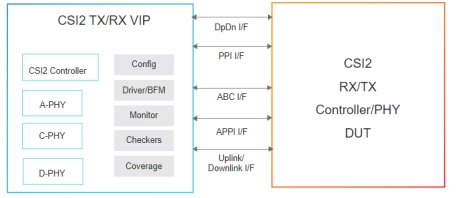
-
MIPI CSI2 Interface Solution
- Brite provides full solution for the MIPI CSI interface, which receives the data from sensors in PHY layer, and then converts the byte data to pixel after lane data mergence.
- Data scramble is an optional feature to decrease the EMI effect.
- A standard PPI interface is implemented for the connection between MIPI PHY and CSI controller. Brite MIPI CSI interface solution supports image applications with varying pixel formats.
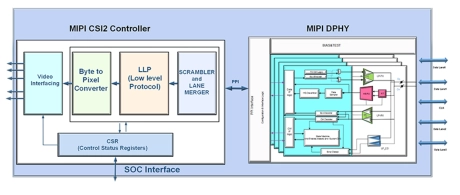
-
CSI-2 v2.1 Receiver IP
- Fully compliant to MIPI standard
- Small footprint
- Functionality ensured with comprehensive verification
- Product quality proven with silicon
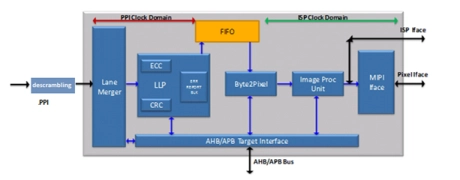
-
CSI-2 v2.1 Transmitter IP
-
Arasan IP Core that functions as a MIPI CSI-2 Transmitter, which typically resides in a mobile platform’s camera module, and communicates over a D-PHY/C-PHY link to a CSI2 Receiver in the applications processor.
-
The Arasan CSI-2 combo IP is MIPI-compliant and provides a standard, scalable, low-power, high-speed interface that supports a wide range of higher image resolutions.
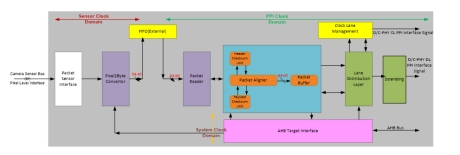
-
-
CSI-2 v1.3 Transmitter IP
- The MIPI compliant IP cores are interface building blocks that simplify interconnect architectures in mobile platforms.
- This leads to smaller footprint, greater interoperability between mobile IP, chips and devices from diverse sources, and lower power and EMI.
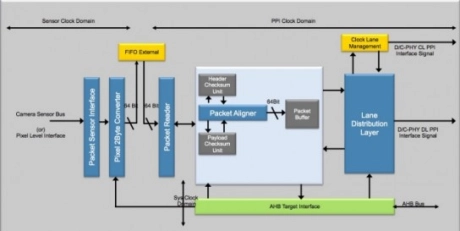
-
CSI-2 v1.3 Receiver IP
- The Mobile Connectivity (MIPI) compliant IP cores are interface building blocks that simplify interconnect architectures in mobile platforms.
- This leads to smaller footprint, greater inter-operability between mobile IP, chips and devices from diverse sources and lower power and Electro Magnetic Interface (EMI).
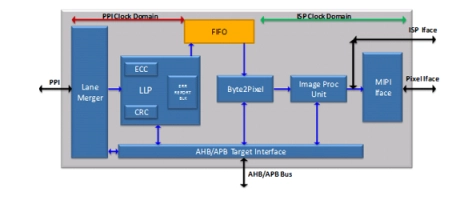
-
MIPI D-PHY IP
- The D-PHY is partitioned into a Digital Module – CIL (Control and Interface Logic) and a Mixed Signal Module. It is provided as a combination of Soft IP views (RTL, and STA Constraints) for Digital Module, and Hard IP views (GDSII/CDL/LEF/LIB) for the Mixed Signal Module.
- This unique offering of Soft and Hard IP permits architectural design flexibility and seamless implementation in customer-specific design flow.
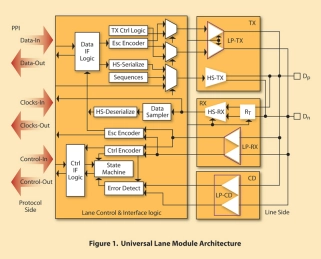
-
MIPI CSI-2 IP
- The MIPI CSI-2 IP core is a highly scalable and silicon-agnostic implementation of the MIPI Camera Serial Interface 2 version 4.1 targeting ASIC and FPGA technologies.
- The MIPI CSI-2 implementation enables high-speed, low-power transmission of image data from camera modules to host processors.

-
MIPI CSI-2 with C-PHY Verification IP
- Compliant to MIPI CSI-2 Specification Version 4.0.1 along with MIPI C-PHY Specification Version 2.1 with PPI interface
- Supports upto 32 virtual channels with C-PHY
- C-PHY supports MFEN and SFEN for CSI-2 TX and RX respectively for Data Lane greater than 1
- C-PHY supports MFAA and SFAA for CSI-2 TX and RX respectively for Data Lane 1 module
